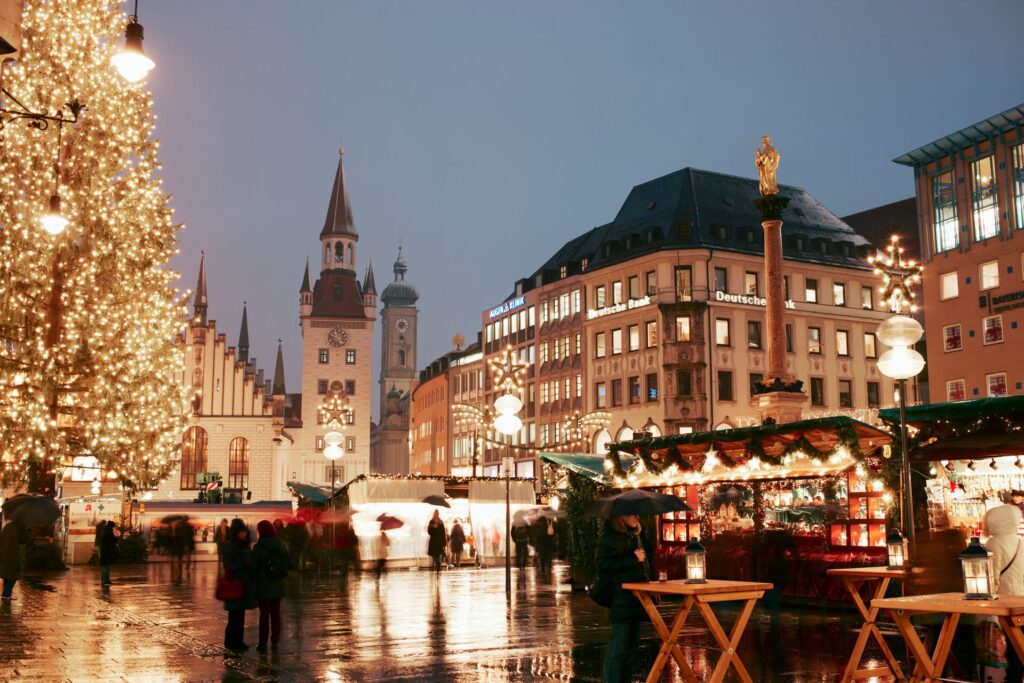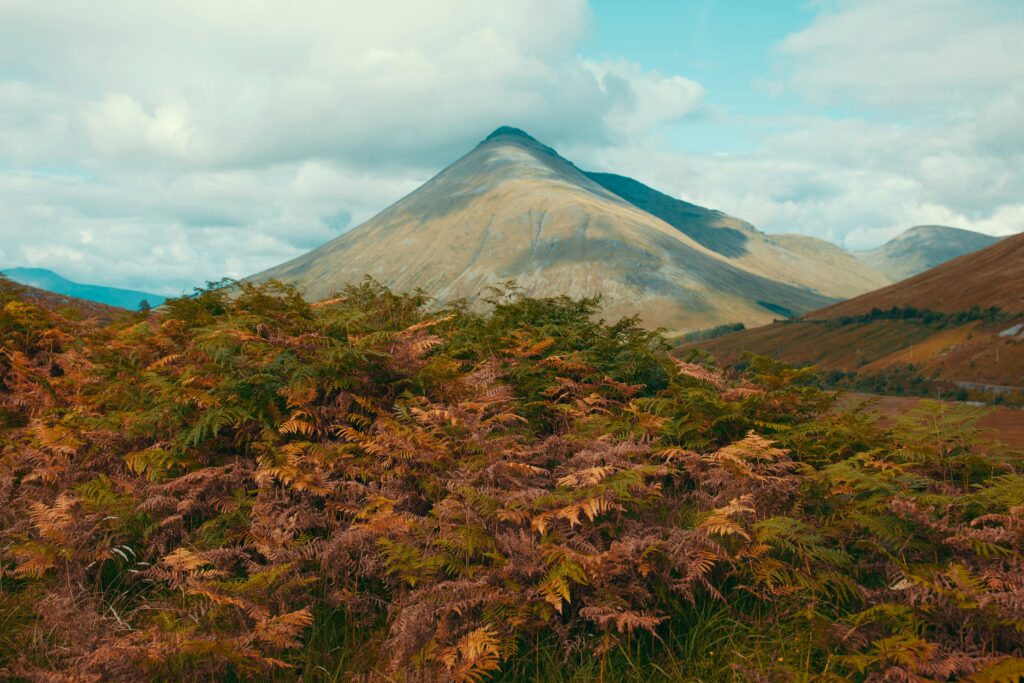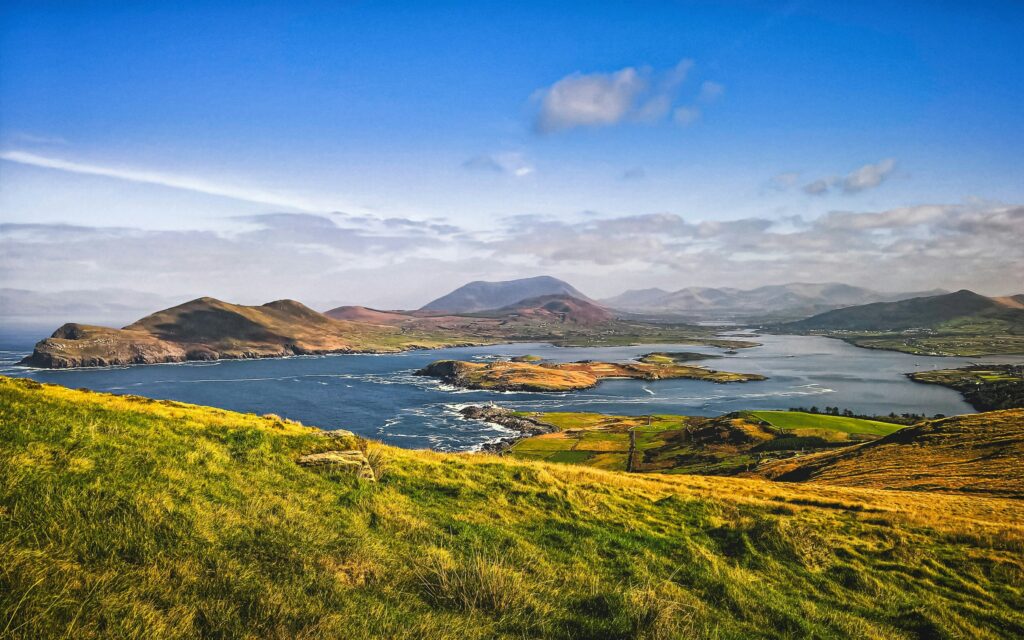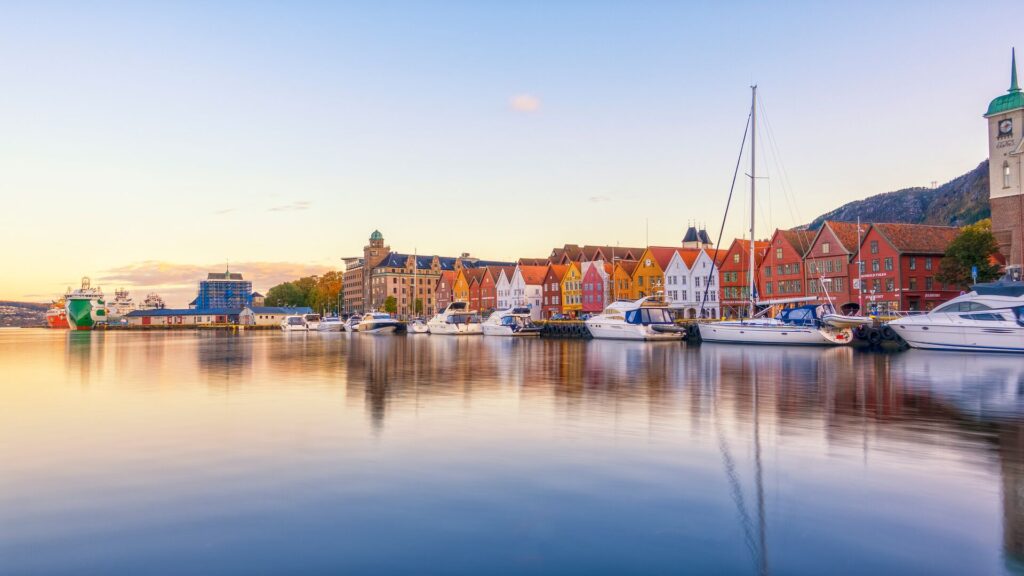Witnessing the Northern Lights is the crown jewel experience in the world of skywatching. It’s one of the most enchanting phenomena on Earth, but what exactly are the Northern Lights? And where can you see them? We dive into the world of the aurora borealis and reveal the best places to see the show.
WHAT ARE THE NORTHERN LIGHTS?
The Northern Lights, or the aurora borealis, are an extraordinary phenomenon where waves of green, yellow and purple lights dance across the sky. They may seem like something out of a fairytale, but science has a dazzling explanation for it, and it’s all to do with molecules: oxygen causes green lights at lower altitudes and red lights at higher altitudes (200 miles), while nitrogen particles causes blue or purple-red lights.
A geomagnetic storm means that there is more aurora activity, bringing the Northern Lights to locations that don’t experience them frequently such as the United Kingdom.
Read more: Sleep under the stars and watch the Northern Lights at this iconic hotel
WHAT CAUSES THE NORTHERN LIGHTS?
The phenomenon happens when solar wind, or waves of energised particles from the sun, crashes into the Earth’s upper atmosphere. They slam into the atmosphere at speeds of up to 72 million kph. Luckily for us, the Earth’s magnetic field protects us and redirects the particles to the poles of the planet. There are southern lights too, in the southern hemisphere, called the aurora australis. The particles transform into a spectacular atmospheric show that fascinates all who witness it.
Read more: Spirits in the sky: the stories and science behind the Northern Lights
HOW TO SEE THE NORTHERN LIGHTS
The Northern Lights are most visible around the North Pole from October to April, when the skies are darkest. To see them, it’s crucial to have a very dark, open environment without any artificial light such as street lighting. The best places to lock eyes with the aurora are Scandinavia, Iceland and northern Canada. Although, extremely strong solar storms can lead to sightings in northern England and Scotland.
The lights are unpredictable and inconsistent but there are several weather forecasts that track the sightings and offer alerts for when strong aurora are predicted.
Read more: The Insight packing guide for chasing the Northern Lights
WHERE CAN YOU SEE THE NORTHERN LIGHTS
We look at some of the best destinations where you can see the magical Northern Lights.
IVALO, FINLAND
Located 250km above the Arctic Circle, Ivalo is famed as the Gateway to the North and a fantastic place to spot the Northern Lights. When you travel here with Insight, we’ll spend the night at the Aurora Village, where you’ll stay in an iconic glass-roof cabin in the snowy wilderness. As you snuggle up in the comfort of your heated room, you’ll be able to gaze out at the night sky and maybe even spot the lights dancing right above you.
Experience it for yourself: Northern Lights of Scandinavia
ICELAND’S SOUTH COAST
We’ll take you through the breathtaking land of Iceland’s south coast on the ultimate aurora adventure. From the beautiful waterfalls of Seljalandsfoss and Skógafoss to the majestic Hekla and Eyjafjallajökull volcanoes, there are plenty of awe-inspiring places where you could spot the Northern Lights. We’ll spend the night in the charming town of Vík, where you can spend your evening chasing the aurora.
Read more: The land of fire, ice and renewable energy – so how does Iceland do it?
ALTA, NORWAY
The world’s first Northern Lights observatory was built in Alta in the late 19th-century, making this the perfect place to witness the aurora. It’s also home to the Northern Lights Cathedral and one of the world’s first ice hotels, where you can raise a glass and enjoy an icy beverage.
Experience it for yourself: Scandinavian Heritage
ALBERTA, CANADA
The best places to see the Northern Lights in Canada are destinations in the Northwest Territories, like Yukon, Yellowknife, and Whitehorse. Manitoba is a great place to spot the aurora while also catching a glimpse of some gorgeous polar bears. If you don’t want to travel too far north, you also have a good chance of spotting the lights in Alberta. Iconic destinations like Banff and Jasper National Park get aurora sightings a few times a year. With the breathtaking scenery of the Rockies as your backdrop, this is undoubtedly one of the most stunning places to witness the Northern Lights.
Experience it for yourself: Spectacular Rockies and Glaciers of Alberta
TROMSØ, NORWAY
Set on the island of Tromsøya, Tromsø is the largest city in northern Norway. Surrounded by snowy mountains and glistening waters, Tromsø is an exceptional place to spot the Northern Lights. Besides the scenery, the city is famous for its charming and colourful traditional wooden houses and fabulous restaurants. It’s also an important place to learn about the indigenous Sami community of Scandinavia. You’ll join a Sami guide for a walk through their camp to feed the reindeer herd and hear stories of Sami life in a lavuu (traditional tent). As you enjoy folk songs around the fire and savour a traditional Sami meal, you may even spot the dazzling aurora twinkling overhead.
Read more: Meet the Sami, the last Indigenous people of Europe
REYKJAVÍK, ICELAND
Reykjavík is the colourful capital of Iceland and it’s also a top place to see the greatest show on Earth. Soak in the Blue Lagoon or stroll along the colourful harbor. Check out the famous Hallgrímskirkja church, all while savouring the famous Icelandic ice cream. Then try to spot the Northern Lights right on the city streets.
Experience it for yourself: Natural Wonders of Iceland
ALASKA, UNITED STATE
You can also find the Northern Lights in Alaska, USA. While the northern lights can be seen anywhere in Alaska, they’re visible most often in the Interior and Arctic regions – though if you can’t get that far north, your best bet is to travel to the outskirts of towns, or in an area known for clear, dark skies. Denali National Park is a great option for viewing, with its northerly location and limited light pollution.
Experience it for yourself: Jewels of Alaska
How long do the Northern Lights last?
As they’re a natural phenomenon there’s no set run-time for the Northern Lights, which can appear any time during the night – they can last anywhere from a few minutes to several hours, so make sure you take it all in while you can! You can check Aurora forecasts to get a rough idea of what to expect, and don’t be surprised if you’re hurried out quickly to catch sight of them.
The Northern Lights roughly follow an 11-year cycle, with the current peak (also known as solar maximum) occurring in 2024-2025. Geomagnetic activity directly impacts the visibility and intensity of the aurora,
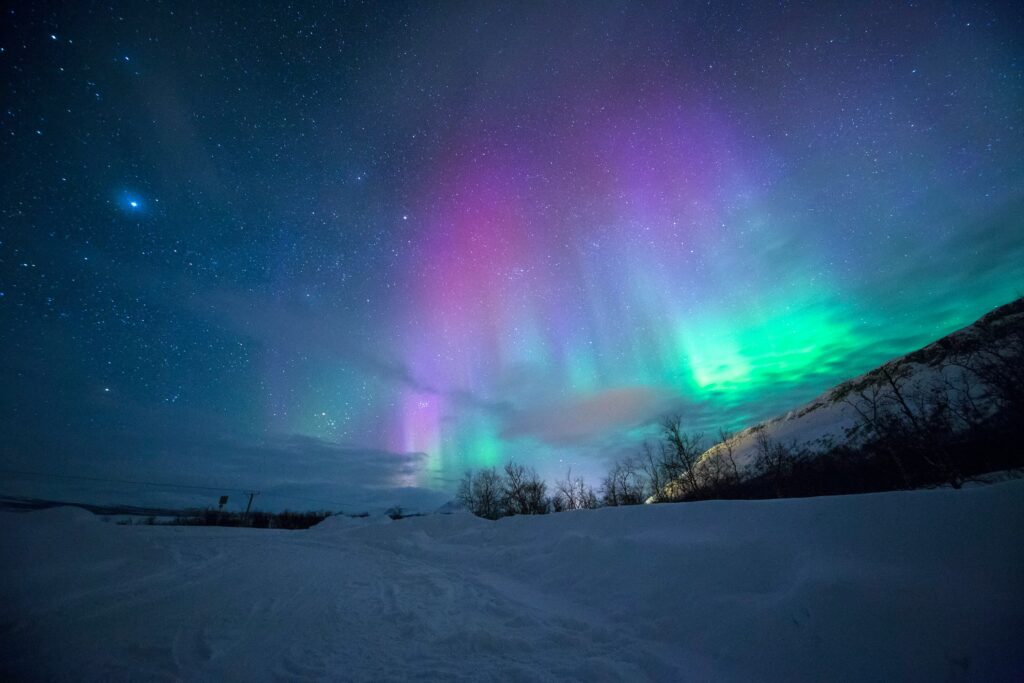
How to take pictures of the Northern Lights?
The key to capturing the Northern Lights is a long exposure, meaning the camera lens is left open for several seconds – or longer – at a time. As the Northern Lights happens during the night, a long exposure is needed to let more light into the lens. If you’re using a professional camera, make sure to bring a tripod as stability is also important (no matter how steady you think your hand is!) to avoid a blurry photo.
Newer smartphones can also take decent photos of the Northern Lights, and the same . Use a tripod, turn off flash, switch it to night mode, and if you can then use the manual settings to adjust the exposure.
It is important to note that the vividness of the northern lights is often enhanced in photographs. In reality, the lights may appear less vibrant to the naked eye. The reason behind this lies in the sensitivity of camera sensors to capture low-light conditions. Cameras can accumulate light over several seconds or minutes, amplifying the colors and intensifying the visual impact. Time lapses give the impression that the aurora is moving, but more commonly it appears as a stationary band of light that could take several minutes to slowly move across the sky. Nevertheless, witnessing the northern lights firsthand in real time remains an awe-inspiring experience.
